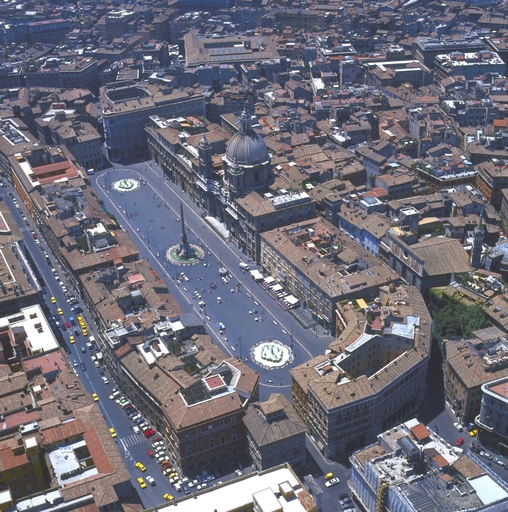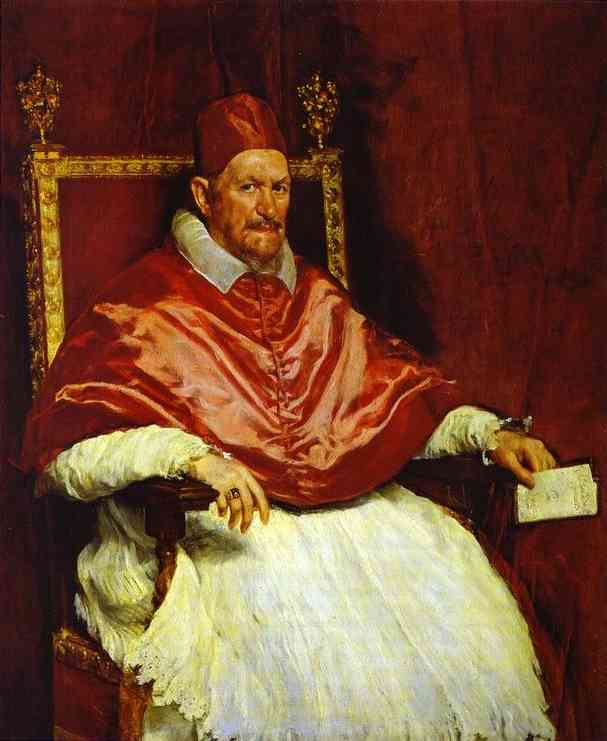|
|
 |
|
Piazza Navona and Bernini's Four Rivers Fountain |
|
written
by ninamil7 / 09.29.2005 |
|
|
| |
Introduction |
| |
| |

|
| http://www.romaturismo.it/ |
| Piazza Navona |
| The Piazza Navona preserves the oval shape of Emperor Domitian's Circus. |
| |
|
| |

|
| instruct.westvalley.edu/ grisham/1b_spanbar.html |
| Pope Innocent X |
| Pope Innocent X was responsible for transforming Piazza Navona into what it is today. |
| |
|
Piazza Navona has been Rome’s most popular secular assembly space for generations. It is built on the spot of Emperor Domitian’s stadium that was constructed in 86 A.D. Over the years, the long, nearly oval piazza has been the site of diversions of all kinds from mock sea battles to medieval jousts. From 1477 to 1869, the piazza was used as a marketplace, and from the 1600s to as recent as the 1800s, it was flooded every weekend in August for the entertainment of the Roman citizens. Much of what is seen today in the Piazza Navona is a result of one family: the Pamphilis. In the 1600s, the Pamphili family gave Piazza Navona a major remodel.
The Pamphili family had been a presence in Rome for a long time. They moved to Rome from Gubbio in the 1400s. Over the years, family members had begun to buy property in the area surrounding the Piazza Navona. In autumn of 1644, the nephew and sister-in-law of Cardinal Giambattisa Pamphili (who would later become Pope Innocent X) bought land next to the cardinal’s house with the idea of combining their properties into one large palace that fronted the Piazza Navona. They felt that this would be the perfect showcase to house one of the leading families in Rome in what was then the largest civic space in the city.
As the Palazzo Pamphili began to take shape, Pope Innocent realized that the character of the Piazza was changing. It was no longer merely a market and gathering place, but rather one of the city’s most important squares and home to the first family of Rome. As the buildings around the piazza were being built and refurbished, it became clear that a single unifying focal point was needed. Innocent decided upon incorporating an ancient obelisk that had just been found at the Circus of Maxentius into a fountain to serve as the centerpiece of his piazza. Now all that was needed was someone to design the fountain.
Gianlorenzo Bernini was one of the most well-known, talented sculptors of the time. One might assume, therefore, that he would have been the obvious first choice to design such a grand piece of art. As it turns out, however, this was not the case. During the reign of Innocent’s predecessor, Urban XIII, Bernini enjoyed the position of the pope’s preferred architect. He lost this position, however, when Innocent became pope. Urban XIII led an unpopular regime and spent a lot of the church’s money on personal items and family expenses. Because of this, Innocent decided that he did not want anything to do with Urban, including, therefore, Bernini. Fortunately, however, the fountain that stands today is indeed Bernini’s work; thus it can be assumed that he found a way around Innocent’s initial exclusion.
History tells two stories of how Bernini accomplished winning the commission for the Four Rivers Fountain. In one story, the pope’s nephew encouraged Bernini to create a model. He then placed Bernini’s model strategically in the Pamphili Palace so that the pope would have to walk around it. After seeing the model, Innocent was completely won over and claimed, “If one does not want to carry out [Bernini’s] designs, one must not see them.” In a second story, it is said that while other sculptors were making models out of clay and wax, Bernini made his out of silver. He then presented this model to the pope’s sister-in-law, Donna Olimpia, who was amply impressed and managed to persuade the pope to accept Bernini’s design. In either case, what is known for sure is that Bernini got the commission and created what stands today as a masterful work of art.
|
| |
|
| |
|
|
 |
|


